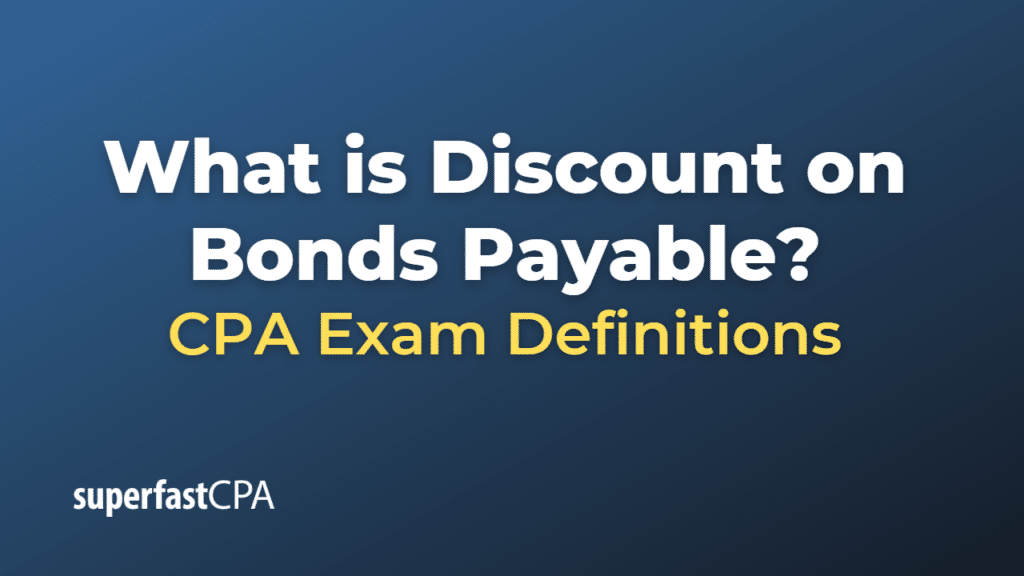Discount on Bonds Payable
“Discount on Bonds Payable” is a concept related to bonds that are issued at a price less than their face value.
When a company issues bonds to raise capital, the bonds might be sold at face value, at a discount, or at a premium, depending on various factors such as the prevailing market interest rates, the creditworthiness of the issuer, and the terms of the bond.
A bond is sold at a discount when the coupon rate (the interest rate stated on the bond) is less than the prevailing market interest rates for similar bonds. In other words, investors would demand a discount on the purchase price to compensate for the lower interest payments they would receive.
The difference between the face value of the bond and the proceeds from the bond issuance is recorded on the issuer’s balance sheet as “Discount on Bonds Payable,” which is a contra liability account (it reduces the bonds payable account when viewed together). This account is amortized over the life of the bond using methods such as the straight-line or effective interest method.
For example, if a company issues a bond with a face value of $1,000 for $950, it would record a “Discount on Bonds Payable” of $50. Over time, this $50 would be amortized and recognized as interest expense, thereby increasing the total interest expense the company recognizes over the life of the bond.
The Discount on Bonds Payable serves as a way to adjust the actual cost of borrowing for the issuing company when bonds are sold at a discount, as it effectively increases the interest expense over the bond’s life.
Example of Discount on Bonds Payable
Let’s take a detailed example to understand the concept of Discount on Bonds Payable:
ABC Corporation decides to issue bonds to raise $100,000 for its business operations. These bonds have a 5-year maturity and a coupon rate (annual interest rate) of 4%, which is lower than the current market interest rate of 5% for similar risk bonds. Because of the lower coupon rate, investors require a discount to purchase these bonds, and the bonds are sold for $98,000.
The difference between the face value of the bonds ($100,000) and the cash ABC Corporation receives ($98,000) is $2,000. This difference is the Discount on Bonds Payable.
Here’s how ABC Corporation would record the issuance of the bonds:
- Debit Cash for $98,000 (this is the cash received from the bond investors)
- Debit Discount on Bonds Payable for $2,000 (this is the contra liability account)
- Credit Bonds Payable for $100,000 (this is the liability representing the amount ABC Corporation must pay back at the end of the bond term)
Over the life of the bonds, the $2,000 discount would be gradually amortized to Interest Expense, thus increasing the total interest cost of the bonds for ABC Corporation. The Discount on Bonds Payable balance decreases over time until it reaches $0 when the bonds mature. At the same time, the carrying value of the Bonds Payable (Bonds Payable minus Discount on Bonds Payable) increases from the issue price ($98,000) to the face value ($100,000). This process is called the amortization of the bond discount.
This example illustrates how a company records a bond issuance at a discount and how the Discount on Bonds Payable is treated over the life of the bond.













